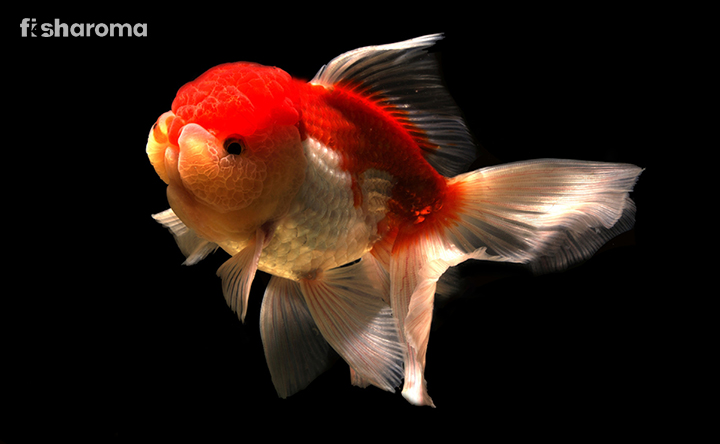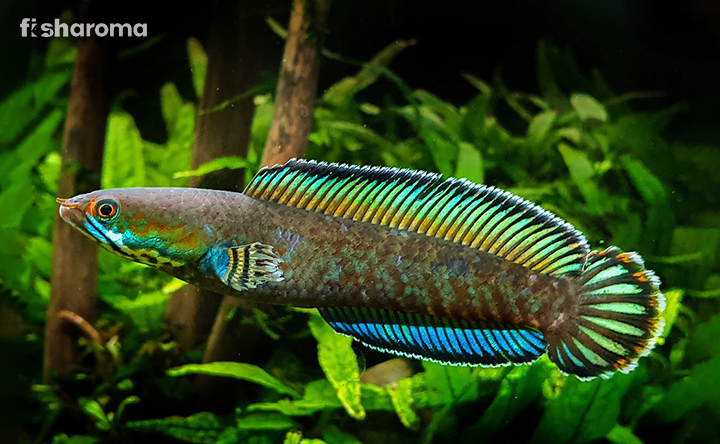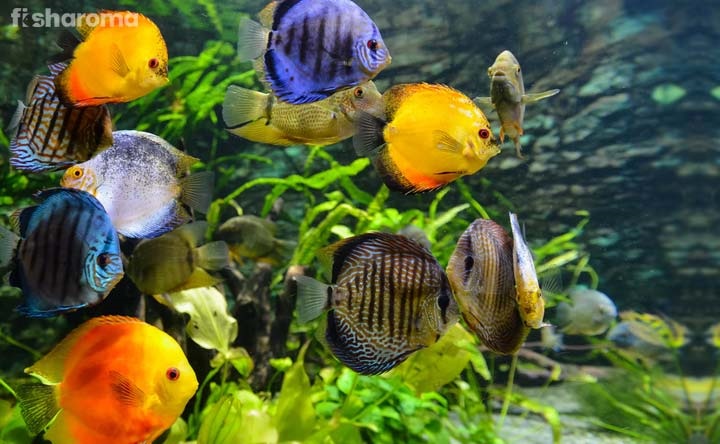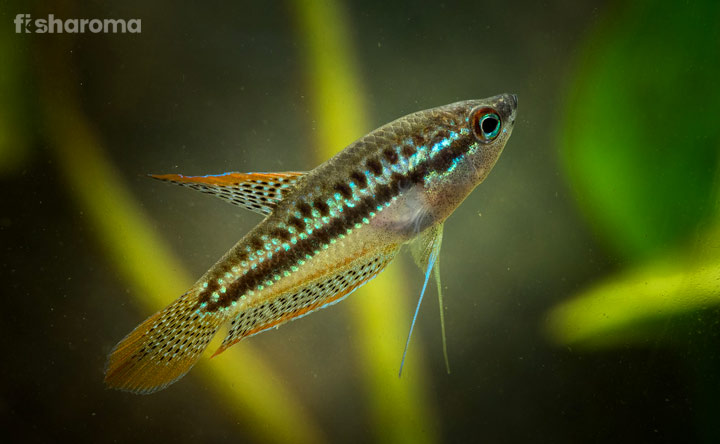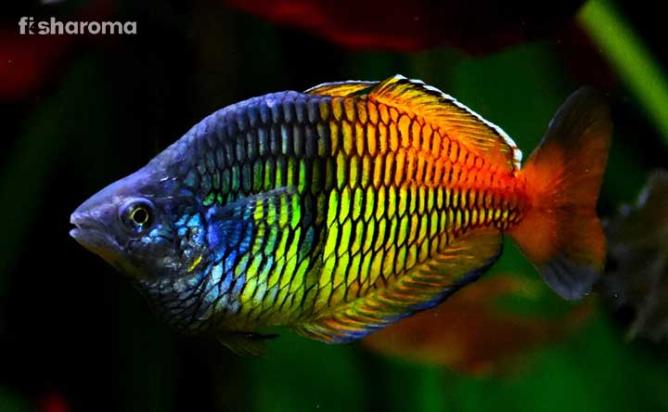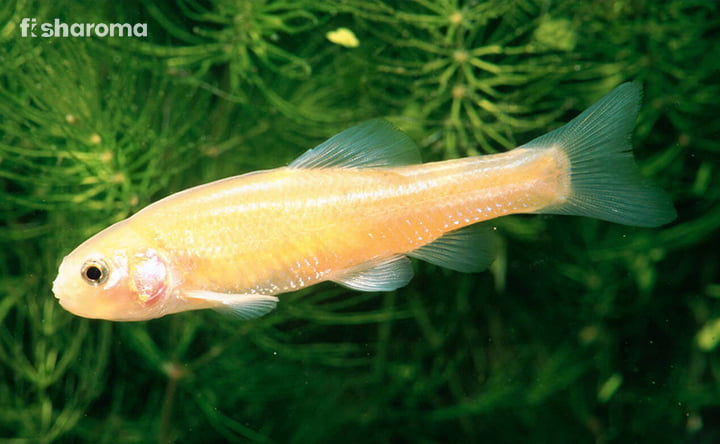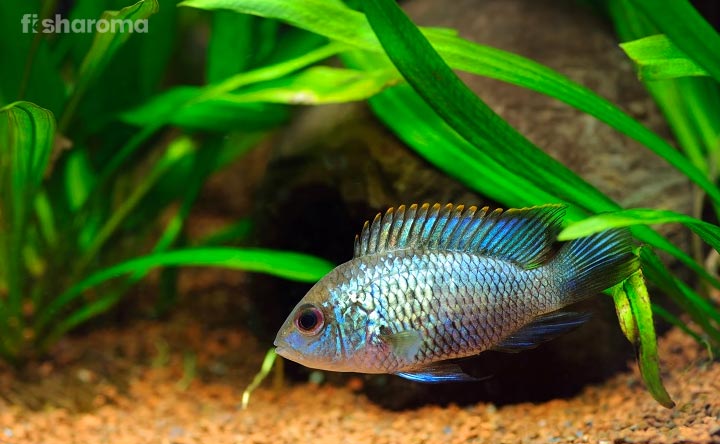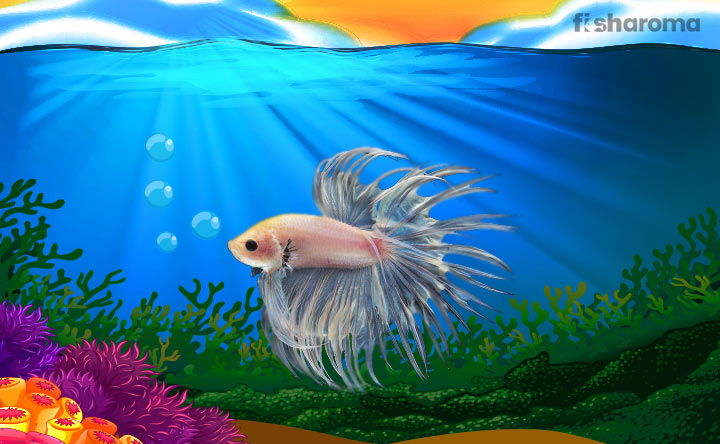Datnoid Care Guide: Lifespan, Tank Mates, Diet, Breeding and Tank Requirements
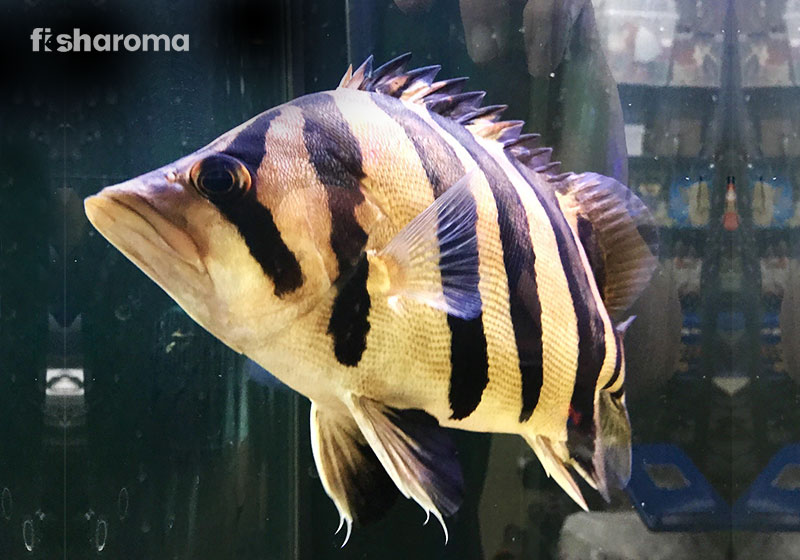
When it comes to popular choices for freshwater pets, one that stands on the top of the totem pole is undoubtedly the Datnoid, also popularly known as Tiger Fish. Its popularity has made it available globally. However, despite the fact that it is extremely popular, there are many misconceptions about its care guide. To help eradicate some myths centred around its care guide, we are presenting before you a scientific step-by-step analysis of how to take care of it when you bring it home. So, let us get started.
Key Specifications of Datnoid Fish
First of all, let us take a closer look at some of its key specifications.
| Scientific Name | Datnioides microlepis |
| Origin | Southeast Asia |
| Lifespan | 10-15 years |
| Colours | Varied |
| Temperament | Semi-aggressive |
| Size | Maximum 14” (35 cm) |
| Diet | Carnivore |
| Family | Datnioididae |
| Compatibility | Low |
| Tank Size | Minimum 150 Gallons |
| Care Level | Moderate |
Overview
Datnoids are extremely elegant, which is why many aquarists love to pet them in their home. Their magnificent appearance clubbed with their feisty behaviour and swift swimming ability makes you want to look at them for hours.
They belong to the Datnioididae family and there are numerous variants under their family umbrella. Please bear in mind not to confuse them with Siamese Tiger Fish.
There are many variants of Datnoids, prominent among them being the following:
- Indonesian Tiger Fish or Indonesian Datnoid
- American Tiger Fish or Silver Tiger
- Northern Thailand Tiger Fish or Thin Bar Datnoid
- Siamese Tiger Fish or Wide Bar Datnoid
- New Guinea Tiger Fish or New Guinea Datnoid
Origin & Habitat of Datnoids
Datnoids are native to Southeast Asian countries, specifically in Indonesia and Thailand. You will mostly find them in the freshwater of Indonesia and the Malay Peninsula. In the wild, the water that they live in is dominated by thick vegetation. This explains why they live a heavily camouflaged life which, in turn, helps them in hunting down their preys.
Appearance of Datnoids
One of the most striking features of Datnoids is their magnificent appearances, as we stated above. Their flat bodies add an aesthetic appeal to the whole tank, and you just can’t take your eyes off of them. The fins of Datnoids are not extraordinarily large and don’t extend too much from their body, and it gives them the unique look. Their bodies are usually tall and have a forehead that slants in a pointed way.
Size of Datnoid Fish
Due to the fact that they have a long lifespan (which we will get into later in the article), they have a slow growth rate in the initial years of their lives. They reach only a foot longer of their total length by their middle age.
They can reach up to 14” (35 cm) in their full lifespan, but this will only happen when it is given proper living conditions. However, in some rare cases, in the wild, they can even grow two feet or sometimes 18” (45 cm). You won’t probably see it in a captive environment, to be honest.
Colour of Datnoid Fish
You would notice 3-4 stripes on their bodies and most of them come with a white and gold colour combination. However, in some variants, you can also see the colour black dominating for the most part.
Behaviour of Datnoids
Datnoids are for the most part pretty peaceful, but they display semi-aggressive characteristics. Of course, these aggressive behaviour come out when they are under stress. So, please make sure to provide them with a healthy environment. Also, you need to ensure that you don’t disturb them by knocking on the glass wall or keeping them with incompatible tankmates (more of which will be discussed later in the article).
It should also be noted that they can be heavily domesticated. This generally comes from the fact that they have a long lifespan and eventually get used to the owner. So, they are easily tamed.
However, it must not be forgotten that Datnoids are very shy when you introduce them first to a new environment. As such, they will spend a considerable amount of time hiding. Once they acclimatise to it, they will quickly warm up to it and hide as frequently. Also, young Datnoids are more shy than their older counterparts.
Lifespan of Datnoids
Datnoids have a pretty long lifespan for a freshwater aquarium pet. So, if you are not ready for a whole lot of commitment, then don’t pet them because if you decide to dump them in the nearby water body after a few years, they will find it very difficult to survive there.
Usually, they live up to ten years in captivity, but if taken care of well, you can even have them live up to 15 years, which is what they sometimes live up to in the wild.
Diet of Datnoids
These are carnivorous fish. In their natural habitat, you will mostly find them thriving on insects and small worms. But sometimes, they would also feast upon crustaceans, small fish, and other similar animals such as snails and crabs.
In the captive environment, they love live food. So, try to feed them that. But, we also understand that having access to live food is not always possible. So, feel free to feed frozen food or pellets as well to them. In fact, they would appreciate it if you keep mixing up the food, providing them pellets one day, live food the next day, and frozen food the next day.
Please remember to properly thaw the frozen food before putting them into the water. You don’t want your fish to get cold shocks. Also, cutting the food into small pieces would help.
Tank Requirements for Datnoids
In order to ensure that they thrive in a captive environment, you need to ensure that you fulfil all the proper tank requirements. Therefore, make sure that you keep the following points in mind.
Tank Size
These are comparatively large fish. So, you need large freshwater tanks for them. They need a minimum of 150-gallon tank for adults and a 60-gallon tank for young ones. Of course, if you are keeping multiple fish, then you need obviously an even larger tank.
Remember, they need a lot of swimming space and hiding spots. So, the more free space they have, the less stressed they would be, which would, in turn, keep them happy and healthy and add to their lifespan.
Tank Lid
Having a tank lid helps in making sure that they are not disturbed by children and pet dogs and cats. It also ensures that dirt and dust don’t accumulate in the tank water, which helps in keeping the tank environment clean. So, please use a tight lid for your tank.
Substrate
Clay or sand or even gravel-based substrate will suffice for Datnoids. Just make sure not to use any substrate that has any sharp objects or any artificial colouring.
Filter
These fish produce a lot of wastes. As such, you would need a good filtration system that would not only keep the tank water clean but also aerated.
Ornaments
Ornaments would play a crucial role for them in a captive environment, especially during their initial days of being introduced to the tank. As we have stated above, they are extremely shy and spend a considerable amount of their time hiding. Therefore, try to keep artificial castles, caves, pebbles and stones which will help in serving as hiding spots for them.
Presence of Flora
They appreciate vegetation in their vicinity. So, please include a lot of plants, especially sturdy ones in their freshwater tank. However, please make sure that you don’t overpopulate your tank with plants since they need some free space for swimming.
Lighting
Don’t use too bright light for the tank where you keep them. Diffused lighting works best for them. Also, make sure that the lighting is switched off at least 12 hours a day. You also must not keep it directly under sunlight since it would lead to algae growth.
Cleaning Method
Datnoids need a clean environment to thrive. So, regularly cleaning the tank that they reside in is an absolute necessity. You don’t have to do anything too fancy for this. Just take a soft cloth and wipe the interiors of the wall after dipping it in lukewarm water. When you do so, keep your fish in a bucket and cover it with a lid.
Use an algae-scraper to get rid of the algae and run the ornaments and substrate under tap water to get rid of debris. Do clean the tank at least once a month. Please note that you can’t use any soap or chemical-based products for cleaning since harmful residues from them would harm the health of your fish.
Water Type for Datnoids
The next important step is obviously ensuring the right type of water for your Datnoids. For that, you need to check the following parameters.
Temperature
Datnoids live in an area with slightly warm water. As a result, please ensure that the temperature of the water stays at 75-80° F (23-26° C). Use an aquarium thermometer and heater to maintain the right temperature.
pH Level
They prefer neutral to slightly basic water. Therefore, make sure the pH level of the water stands at 7.0-7.5. Use a pH testing kit to always maintain the apt pH level.
Replacement Procedure
Water replacement is an integral part of fishkeeping. Remember, never to replace the entire water content altogether since it would kill off the beneficial bacteria. Also, the new batch of water that you add to the tank must have the same parameters (temperature, mineral level, pH level, etc.) as that of the existing batch of the water.
You can either replace 10 per cent of the tank water on a weekly basis or 25 per cent of the tank water every 15 days. If you want to do it on a monthly basis, then you need to replace 40 per cent of the tank water. Choose any of these, whichever seems convenient to you.
Compatibility of Datnoids
They are not the most amicable fish that you can own. In fact, their predatory nature makes them extremely dangerous to be kept around small fish. They stalk their preys and then when the right opportunity arrives, they suck their preys in.
When introduced for the first time in the tank, they might occasionally display aggressive behaviour. You can keep 4-6 of them together. In fact, this would keep them happy.
Suitable Tankmates for Datnoid Fish
They thrive well with species that are similar to them in size and aggression. Therefore, find large, semi-aggressive species for them. Some of the ideal tankmates for Datnoids are as follows:
- Arowanas
- Dinosaur Bichir
- Peacock Bass
- Catfish
- Other types of Datnoids
Unsuitable Tankmates for Datnoid Fish
As we said above, try not to keep them with species that are small in size or are very peaceful and docile since they might get attacked by Datnoids. Also, avoid keeping them with small crustaceans since they would become food to them.
Breeding of Datnoids
Breeding Datnoid fish is extremely difficult in captivity. As such, most aquarists don’t try it at home. Successful breeding only takes place in the wild and sometimes in commercial fishing hubs.
So, if you want to buy young Datnoids, you need to go to the market and look out for the healthy ones. While making your purchase, please ensure that they don’t have any cuts or bruises on their bodies. In addition, when you buy a new Datnoid, don’t forget to quarantine them before adding them to your main tank in order to avoid any infection from entering the main tank. The same is true for any new decorative items or substrate for your tank. In short, quarantine everything you add to your tank.
Summary
Datnoids are fascinating species and are hugely popular among aquarists across the globe. They are excellent swimmers and have impressive appearances. These fish are known for their predatory semi-aggressive yet shy behaviour. They don’t have any larger-than-life dietary and tank requirements. However, you need to always ensure that they live in a clean environment. In addition, their carnivorous nature would compel you to provide them with live food more often than you would have to with any other freshwater pets.
They can suffer from ich and ocular diseases. So, make sure to look out for any unnatural behaviour or physical traits in them such as white spots on the skin, clamped fins, clouded eyes, protruding eyes, etc. Consult a veterinarian as soon as you see any irregular symptoms in them. Breeding them can be extremely difficult and is not recommended to be done at home.
Their long lifespan and large size also make them difficult to be kept as pets. So, if you are able to fully commit, then these fish are for you. Else, don’t just buy them for the sake of it and dump them to their untimely death a few years later because that would be unfair to them.
Care Guides of Other Similar Pets
If this article has sparked your interest, then we are certain that the following articles will interest you as well. Take a look:
- Sparkling Gourami Care Guide: Known for their simple yet appealing nature, these are highly in demand due to their peaceful demeanour. Find out how to care for them from this space.
- Bolivian Ram Care Guide: Having a body that speaks sheer beauty in itself, Bolivian Rams are on the high end of the spectrum when it comes to appearances. Find out about their care guide from here.
- Silver Dollar Care Guide: If you are planning to host a school of fish, then we can’t recommend Silver Dollars enough. Take a look at their care guide from here.

